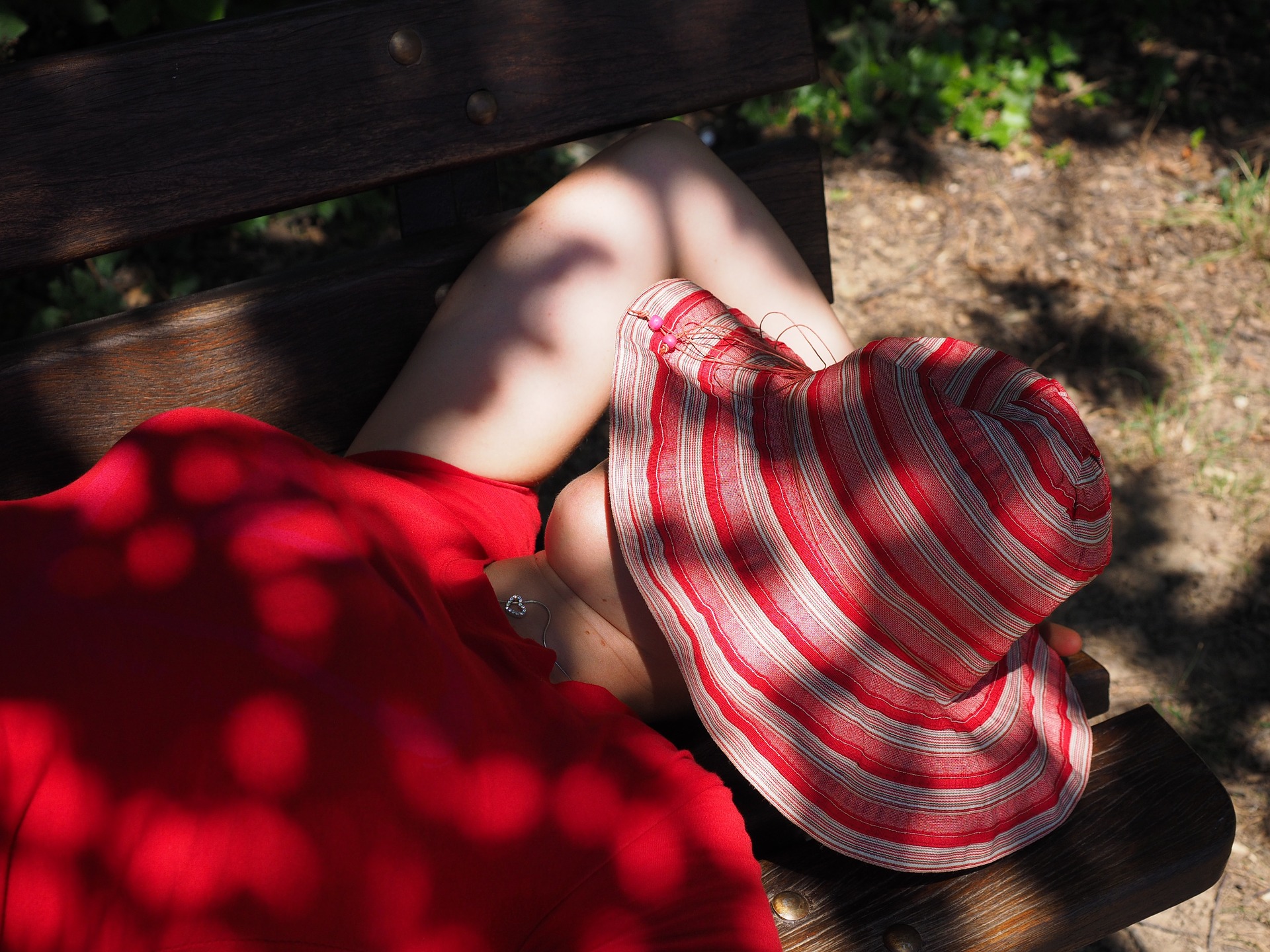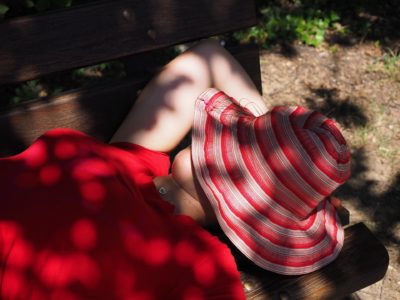Reverse Seasonal Affective Disorder or SAD – Is Travel an Escape Route?

Seasonal affective disorder is a mental health condition affecting millions of people. Also known by its all-too-appropriate acronym – SAD – this condition is a form of depression that is seasonal. Because it is not year-round, it often can be confused or conflated with events or other “time of year” happenings. And while the most common form occurs in the winter months, there is a less common form known as reverse seasonal affective disorder that strikes during the summer.

I know about this all too well. I suffer from reverse seasonal affective disorder. So does Jim. For the two of us, July and August are the most unbearable months. We are all too glad to have them behind us for another year.
This has a direct correlation to our habits as travelers. For years I used travel as a substitute for full medical intervention. And I still seek geographic relocation as a form of analgesia during the worst periods of my seasonal affective disorder. But awareness of the condition has helped make me a more aware traveler… and perhaps others can relate. Talking about mental health disorders is still relatively taboo… but it shouldn’t be. Medical research bodies vary with statistics suggesting that up to a third of the population may be affected by some form of SAD.
The most common form of seasonal affective disorder strikes in the winter. The American Academy of Family Physicians has estimated that 4-6% of the US adult population suffers from winter SAD with another 10-20% exhibiting mild or occasional symptoms.
What are the symptoms of seasonal affective disorder?
The Mayo Clinic reports that typical symptoms of fall/winter SAD include the following beginning in autumn and heightening as winter peaks:
- Irritability
- Tiredness or low energy
- Problems getting along with other people
- Hypersensitivity to rejection
- Heavy, “leaden” feeling in the arms or legs
- Oversleeping
- Appetite changes, especially a craving for foods high in carbohydrates
- Weight gain
The less common reverse seasonal affective disorder is believed to affect fewer than 5% of the population with the following symptoms starting in the spring and climaxing in the summer months:
- Depression
- Trouble sleeping (insomnia)
- Weight loss
- Poor appetite
- Agitation or anxiety
Causes and diagnosis for SAD
Medical researchers still do not know exactly what causes all SAD cases. But they believe several things contribute including serotonin and melatonin levels, circadian rhythms (the same issues that cause jet lag), and specific risk factors. Those risks include being female, age, family history, other clinical depression diagnoses, and distance from the equator. Age appears to be a bimodal contributor – younger people are more likely to have the fall/winter varietal and reverse seasonal affective disorder is more common in older adults.
There is no laboratory or diagnostic test for seasonal affective disorder. Instead, a diagnosis is made by a trained medical professional after a review of medical history, review of symptoms, and elimination of other possible diagnoses. Often this disorder is a co-morbidity, meaning it exists along with other issues such as autoimmune disorders, mental health issues, or addictions.
Living with seasonal affective disorder
Treating seasonal affective disorder is not something that should be self-managed, despite my own attempts to do so for years (before I was properly diagnosed). Light therapy, mild antidepressants, exercise, regulated sleep, talk therapy, and environmental stimulus are all means of treating both forms of SAD.
Individuals who have SAD may need to spend extra time getting proper daylight exposure to maintain optimal circadian rhythms. Following anti-jet leg advice can often be helpful. Following a healthy diet and using natural sleep remedies can all help.
Some, but not all, of those who suffer from seasonal affective disorder find relief from treatments for depression and/or anxiety. Wellbutrin is the only drug approved by the FDA for clinical treatment of SAD. But other drugs may also be utilized by medical professionals, either alone, or in combination with light therapy and/or talk therapy.
How I’ve coped with my reverse seasonal affective disorder
My own formal diagnosis was a long time coming and resulted from more awareness of my own personal state. A combination of more detailed journals correlated with past years’ calendar notes (thank you social media!) allowed me to analyze my own data. My sleep patterns and anxiety levels experienced noted changes from mid-May to mid-September every year. I noted that it would start to spike around July 4th, peak in August, and then drop off notably after Labor Day. The drop was slower to occur in years when summer hung on longer.
But it wasn’t just my mental or emotional state that was affected. I’ve had auto-immune disorders for most of my life. I’d never made the formal connection that most of my disease flares occurred in July or August. Neither did my physicians – until this year. Suddenly the pattern was clear. Achy, almost debilitated joints – often made worse by a hot weekend or trip to a warm humid locale. Lupus-like rashes that appeared after heat waves. Headaches and fogginess and loss of appetite, all at the same time every year.
I can try my best to set myself up for success as a best defense. That includes planning my difficult activities for earlier when I’m least likely to be worn out. Or if I anticipate a challenging evening, I may take a nap to conserve energy. I also use help where I can for strenuous chores. As we’ve been planning special projects around our renovation and reorganization, we’ve broken large tasks up across several days.
Proper sleep hygiene is an important part of my treatment. I try to go to bed and wake up at a similar time every night. (“Annoying early” might be the description Jim would use!) I try to plan my activities to avoid the heat. While avoiding heat, I still have to make sure I get optimal sunlight which means keeping curtains open for daylight exposure and running the air conditioning on high.
Is travel an escape route for SAD?
The concept of travel or temporary relocation as a means of relief for seasonal affective disorder is not a new one. “Snowbirds” from cold weather climates have flocked to places like Arizona or Florida in the winter months for decades, many for health reasons. SAD has long been noted as one contributing condition. But travel can be an important escape for those with either varietal of the disorder. Those who suffer from reverse seasonal affective disorder may want to avoid the worst of the summer heat by spending time in a cooler climate.
Medical professionals believe there is a tie to geography and seasonal affective disorder. The closer proximity one has to the equator, the greater the prevalence of reverse seasonal affective disorder. The further from the equator, the greater incidence of the fall/winter varietal.
Long before I was clinically diagnosed, I tried to spend as much time away from Texas in the worst of the summer months. I usually chose cooler climates or places with less humidity. We’ve discussed planning to rent out our home for the summer in the future. We’ll temporarily relocate to a northern state for the worst months for the good of our health.
How you can help someone with either type of SAD
The best help you give someone suffering from seasonal affective disorder is your compassion and understanding. With the seasonal nature of this disorder, it may seem like your friend or loved one is undergoing a temporary personality shift – or to think that perhaps they are upset with or avoiding you. They may instead be struggling to perform day-to-day tasks, dealing with unusual fatigue or anxiety, or distressed by the temperature.
When the weatherman says “its going to be a hot one, but otherwise a beautiful day to get outdoors today”, you start to think something is wrong with you when you don’t agree with what everyone else must be thinking. That isolation can be difficult, especially on social media. I try to remember that in the winter (my favorite season) when I know many others are in the peak of their own seasonal affective disorder. My excitement at cold weather and grey days may be the mark of another person’s doldrums.
Social events can be difficult when one is suffering from SAD. My peak is during summer barbeques, pool parties, and other outdoor outings. While others are excited, I have anxiety. I turn down invitations because I don’t want to be sitting inside alone. It is sometimes easier to say “no” than to advocate for my own needs. If you have a friend with SAD, support their need for a “time out”. When possible, help navigate a social option best for their well-being – climate or light-sensitive activities, for example.
And finally, if you see someone veering to a more serious form of depression – especially hallucinations, psychosis, or thoughts of suicide – seek professional help. Early detection and treatment is important with any type of mental health disorder.
Do you suffer from either type of seasonal affective disorder? And if you do, what is your coping strategy?
Jennifer – Very informative and well written. Thanks.